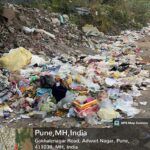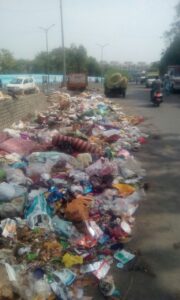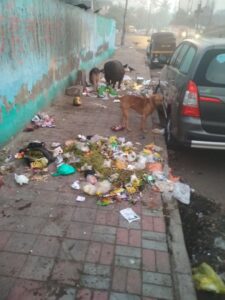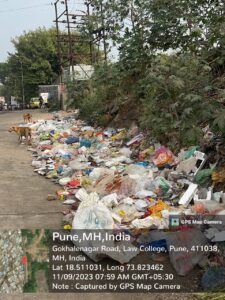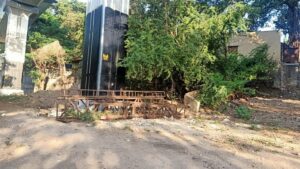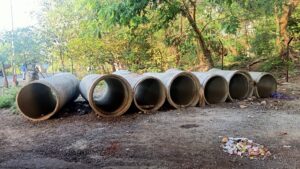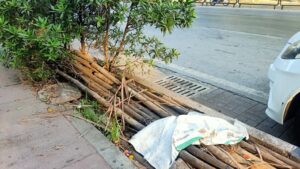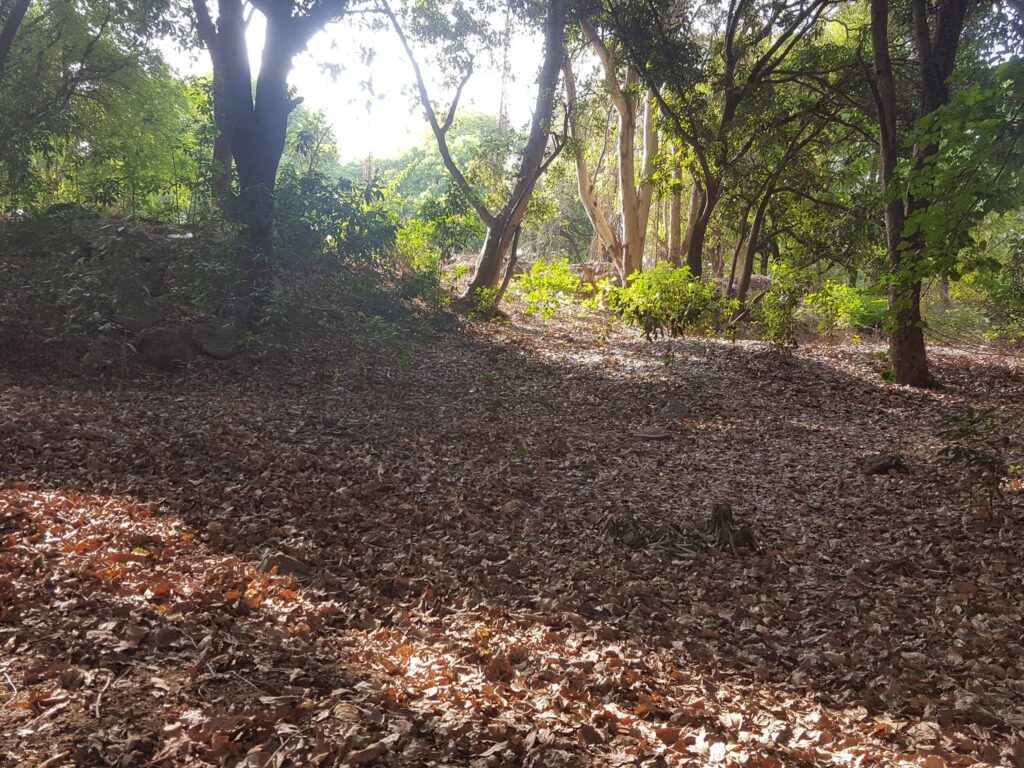
Forest is a complex system with multitude of elements, processes and interactions. It has various processes interacting with each other, taking in many elements as input and producing output.
Let us take the case of a city which is similar to a forest when it comes to the complexity. A city comprises of many elements like living beings, structures that interact with each other. It also has many processes with inputs and outputs interacting with each other and with the other elements.
Of course, the comparison ends here.

Our cities are drowning in their own waste whereas there is no waste created in a forest. The concept of waste itself is non-existent in a forest or in the nature in general.
How is it possible? Why the two seemingly similar systems differ so significantly when it comes to the output?
Why there is no waste in a forest (or in nature)?
In nature, an output from one process serves as an input to some other process. The material resulting from a process is used by some other process as its ingredient.
This is the circular design that exists in nature. Materials move in this circular manner; they are used and re-used indefinitely. Hence nothing goes as waste.
Consider a tree in the forest. The tree absorbs water and various nutrients from the soil. A leaf falls to the ground. The insects from the soil break it down. The microorganisms present in the soil chemically digest it. The nutrients present in the leaf are returned to the soil where they are now available to the tree again.
This is the same reason why fallen leaves do not seem like waste in a forest whereas in the city where since there is no soil to accommodate them, they are referred to as leaf-waste.
A material in a circular system is a resource since some processing is making use of it. The moment it is out of it, it becomes waste.
Why there is waste in our cities
Waste exists in the human habitations because most of our systems are no longer circular.
Our species i.e. Homo sapiens believed to have originated in East Africa about two to three lacs years back. For the majority part of our existence, we made use of stones, wood and animal bones to make tools which are in the circular system.
In the last 10,000 years we created practices that broke this circularity. There are two factors, type of materials and the quantity of materials.
Clay pottery i.e. the art of making clay pots is probably the first linear system created by the humans. Clay when baked no longer remains the clay. When the pot breaks, the clay particles do not become part of the soil around because baking changes its fundamental properties.
We started creating material that could not go back to the soil as before. After Industrial Revolution, such type of materials increased.
Production was limited when it depended on the human and animal muscle. Humans and animals get tired and need rest. Machines changed that. Machines could operate non-stop as long as there is continuous supply of fuel.
Machines increased both; our rate of extraction of natural resources creating continuous supply of raw materials and the rate of production.
Production of materials that cannot go back to the soil and that cannot be safely and indefinitely recycled made the system a linear one. Liner system has an end where the WASTE is created.
Waste in the city can be roughly categorized into the following
- Discarded and unusable as it is: No other process can use it
- Discarded and partially usable: Some other process can use it with a few modifications
- Discarded but usable: Some other process can use it but material does not reach that process and hence ends up as waste
For a material to be continuously in a circular system, it needs following
- Material should be biodegradable
- Material should be infinitely and 100% recyclable.
Waste is created when the material does not satisfy either of the criteria or if the material does not reach the process that can make use of it.
Discarded and unusable as it is
Discarded and partially usable
Discarded but usable
Circular design of forests in the city
Currently we create waste and then find ways to manage it. Not much focus is given to explore ways to prevent waste generation itself.
Like there is no waste in the forests, can we design systems in the city so that waste itself is eliminated?
Key is in the circularity. Circular design uses and re-uses resources without creating waste.
Ways to achieve circularity
- Use resources that are biodegradable i.e. the ones that will safely return to the soil
- Use resources that are 100% and infinitely recyclable
- Create coordinated material management system so that resources can reach the appropriate processes that would utilize them


